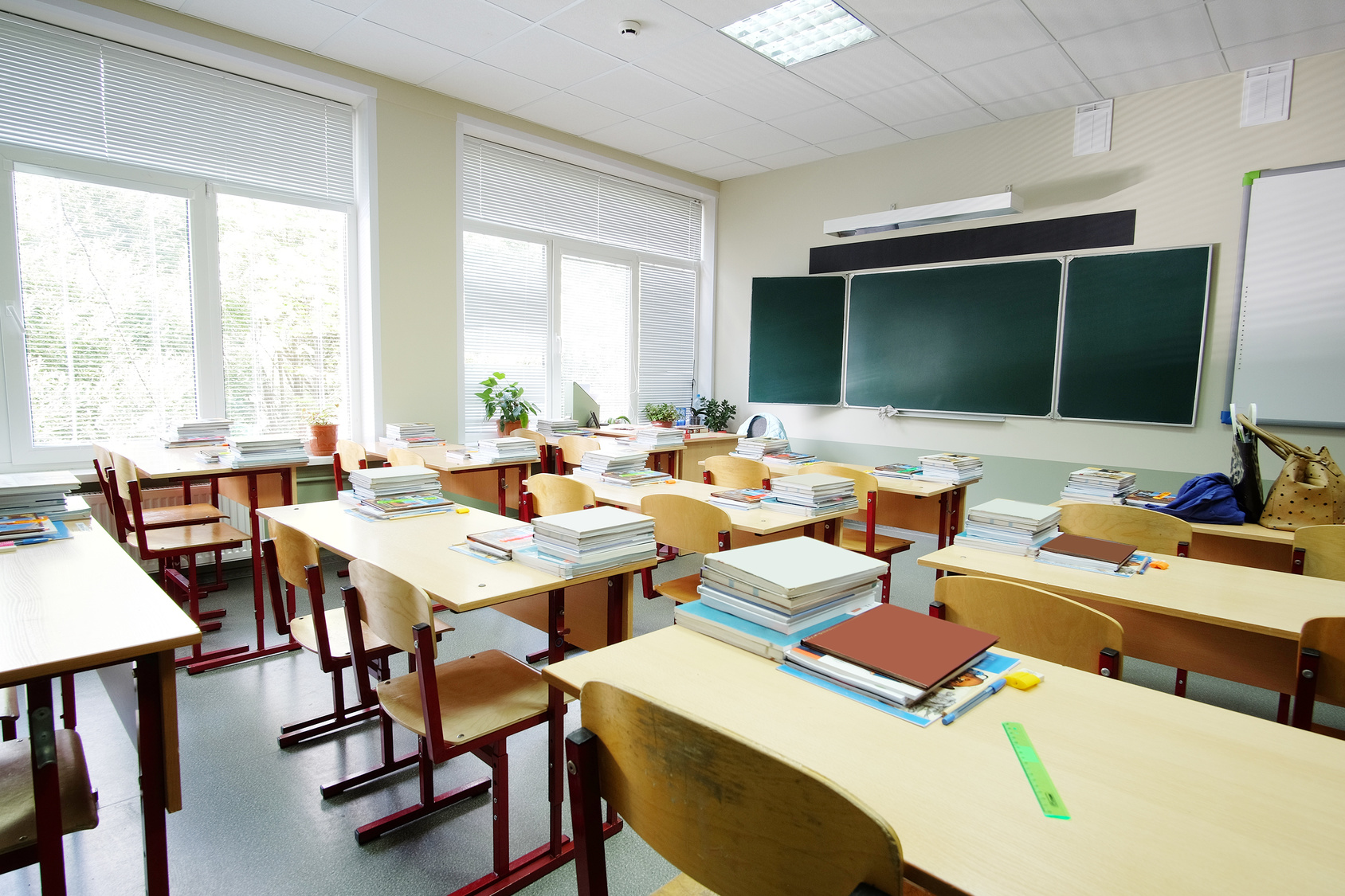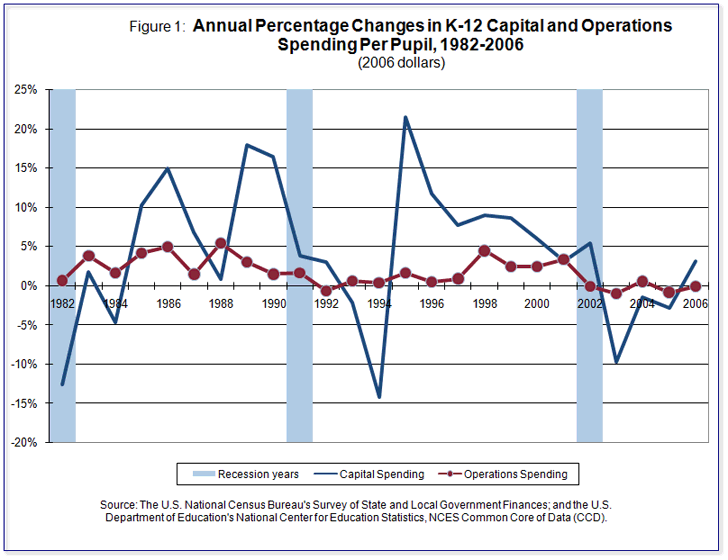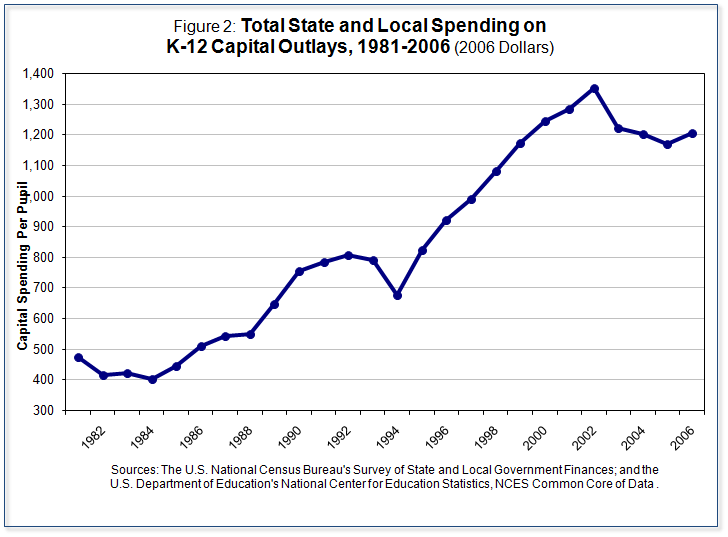Since the 1960s the federal government has played a growing role in financing education programs in the nation’s schools, especially for poor children – yet has contributed very little to school upgrades and construction. But the economic package now going through Congress would allow school districts to use some of the $40.6 billion in stimulus education money for school modernization projects and includes a new bond-financing program for school construction, rehabilitation, and repair.
Why this new policy direction? A look at what has happened in previous recessions may provide the answer. Over the last quarter of a century, after each economic recession, school capital spending has taken a significant hit. Absent the stimulus package, the current downturn is likely to follow a similar pattern, with one important difference: capital spending levels have not yet recovered from the cuts they sustained in the last recession.
Although education spending per pupil generally increased between 1981 and 2006, growth stalled following the recessions in the early ‘80s, early ‘90s, and early 2000s, when state revenues were tight. Figure 1 shows that, during each of these periods, governments maintained operations spending—thus minimizing teacher layoffs—but slashed school capital projects by between 10 and 14 percent.
The current recession may follow a similar pattern—with one significant difference. Figure 2 shows that, leading up to the recessions in the early ‘90s and early 2000s, capital spending enjoyed periods of sustained growth. Capital outlays have stagnated since 2003, however, which means that this time, the new recession is hitting before we’ve seen any evidence that capital spending has recovered from the previous one.
If states and districts have been making a trade-off between operations and capital expenditures, it is a potentially costly one. Experts agree that postponing needed maintenance or construction can lead to health and safety problems and increased repair costs. The last time the federal government studied the condition of school facilities, it found that it would cost $126 billion to put U.S. public school buildings into “good overall condition.” [1] That was in 1999, on the heels of five straight years of strong growth in capital spending.
In the latter years of his presidency, President Clinton repeatedly sought—and failed—to include money for school construction in the federal budget. Capital support has traditionally been the responsibility of districts and states, while federal support has focused on aid to needy students. In negotiating the current economic package, Republicans on the House of Representatives Education and Labor Committee strongly objected to the inclusion of school construction measures “an ill-considered expansion of the federal government’s role.” However, if the capital infusion comes at the right time, it will function as a one-shot stimulus rather than getting built into governments’ base budgets.
[1] National Center for Education Statistics, Condition of America’s Public School Facilities: 1999, NCES 2000-032 (Washington, DC: U.S. Department of Education, June 2000), iii-iv.
Data come from the U.S. Census Bureau’s Survey of State and Local Government Finances and the U.S. Department of Education’s National Center for Education Statistics (NCES), NCES Common Core of Data (CCD), http://nces.ed.gov/programs/digest/d95/dtab039.asp (Table 39. Enrollment in public elementary and secondary schools, by level and state: Fall 1980 to fall 1994), and http://nces.ed.gov/programs/digest/d05/tables/dt05_033.asp (Table 33. Enrollment in public elementary and secondary schools, by state or jurisdiction: Selected years, 1990 through 2005). This report focuses on public schools. Inflation adjustments are made using Price Indices for State and Local Government Consumption Expenditures and Gross Investment for K-12 Education.



